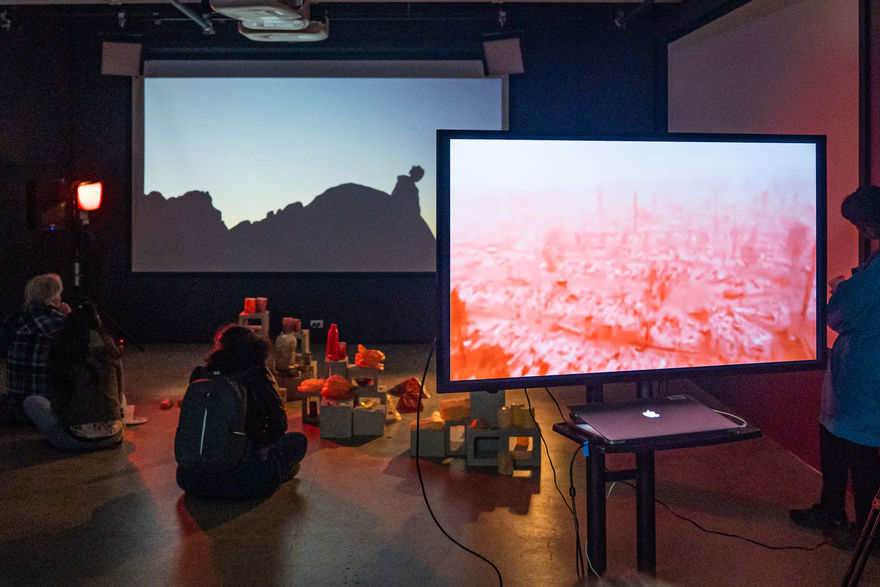
The Paradise Dioramas
2020
The Paradise Dioramas explores climate change as a moment of origin and birth of a new environmental mythology. Video works consider how the speed and frequency of media desensitize us to stories of disaster, offering an antidote to compassion fatigue and avenue for environmental empathy.
The transmedia installation includes the following works: a three-channel video work 'Light Artifact', single-channel video 'Steal Fire', multi-channel animation work 'slowburn' and a sculptural floor installation 'Disaster Kit.' Wax disaster survival kits ruminate on the personal experience of climate crisis.
This project is informed by a series of interviews with fire researchers, botanists, and survivors of wildfire. The work highlights disaster as an opportunity either for community division or convergence. It asks hows our survival is linked to the survival of other species and proposes that global climate resiliency is a function of collaboration.
The first iteration of The Paradise Dioramas exhibited at CultureHub LA as part of the 2019-20 Resident Artist program. The work examines our capacity for climate adaptation and rebuilding. Using the diorama form, the work creates a slippage between what is real and imagined, what is the past and what is the future, and turns the human-as-viewer-of-nature in on itself.
The Paradise Dioramas was developed within the CultureHub Residency Program.
Sound design by Noctvrnal, audio post production and creative technology studio in Los Angeles, CA.
Read about The Paradise Dioramas on CultureHub LA’s website.
Sound Design: Noctvrnal
Performers: Jisoo Chung, Carey Coleman, Liz Maelene, Minsu Kang
Documentation of exhibition: Kyu Sun Hong
 |  |  |
|---|

The end of the video loop confronts us with word “Paradise” and a palm tree’s silhouette. Is Beavers suggesting we flee to “paradise island” instead of confronting the problem at home? Although it’s also my understanding that trees of the palm tree family (Arecaceae) are particularly susceptible to fires. Perhaps the takeaway here is that there will be no paradise, no escape from reality, if we do not come to terms with our realities in the first place!



















